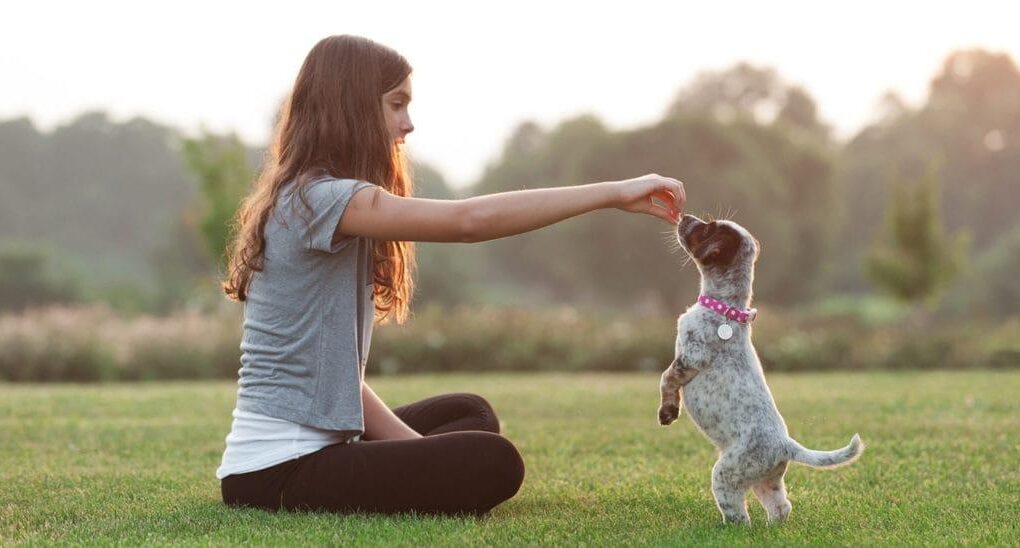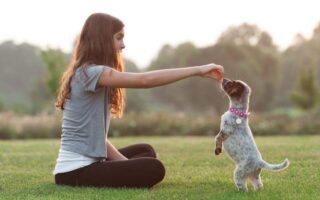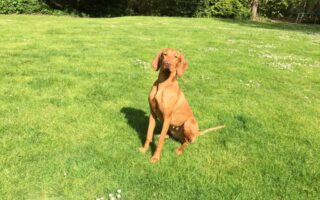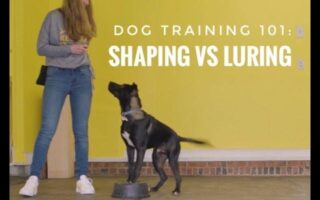Bringing a new puppy into your home is an exciting adventure filled with boundless energy, wagging tails, and endless joy. However, along with the cuddles and cuteness comes a challenge that many puppy owners face: the instinct to bite. While playful nibbles may seem harmless, teaching your furry friend the boundaries of acceptable behavior is essential for their development and your peace of mind. In this article, we will explore effective strategies and gentle techniques to guide your pup from playful mouthing to polite interactions. Because every great relationship begins with understanding, the journey to a well-mannered puppy starts here.
Table of Contents
- Understanding Puppy Biting Behaviors and Their Triggers
- Effective Techniques for Redirecting Playful Nibbles
- Establishing Consistent Boundaries and Communication
- The Role of Socialization in Preventing Biting Issues
- Q&A
- Insights and Conclusions
Understanding Puppy Biting Behaviors and Their Triggers
Puppy biting is a natural behavior, especially during their teething phase or when they’re exploring the world around them. Puppies often use their mouths to investigate their environment, and this can lead to unexpected nibbles on hands, clothing, and furniture. Understanding the context in which these biting behaviors occur can significantly aid in addressing them effectively. Common triggers include:
- Playtime: Excitement can lead to enthusiastic nipping.
- Attention-seeking: If a puppy feels overlooked, they might bite or nip to get noticed.
- Teething: Gums can be uncomfortable, prompting puppies to chew on various items.
- Overstimulated: Too much interaction can overwhelm a puppy, leading to biting as a release.
To combat these behaviors, it’s crucial to redirect the pup’s energy and focus. Establishing boundaries and providing appropriate outlets can help discourage unwanted biting. A simple strategy is to use a table of acceptable chew toys versus items they should avoid:
| Acceptable Chew Toys | Items to Avoid |
|---|---|
| Rubber chew toys | Hands |
| Rawhide bones | Shoes |
| Strings or ropes for tug-of-war | Furniture |
By recognizing these triggers and setting clear boundaries, you can understand your puppy’s behavior better while fostering a positive and safe environment for both you and your furry friend.
Effective Techniques for Redirecting Playful Nibbles
One of the most effective ways to curb those playful nibbles is by offering your puppy a variety of appropriate chew toys. By doing so, not only do you provide a satisfying outlet for their instinctual chewing behavior, but you also teach them that certain items are meant for biting. Look for durable, engaging toys that have different textures to keep your puppy interested. Here are some ideas:
- Rubber Chew Toys: These are ideal for tough chewers.
- Interactive Puzzle Toys: Stimulates their mind while satisfying their urge to chew.
- Soft Plush Toys: Great for gentle nibbles and snuggles.
In addition to providing chew toys, it’s important to redirect your puppy’s attention when they begin to nip at you. A brisk change in activity or environment helps reinforce the idea that biting is not acceptable. Whenever the playful nibbles occur, gently withdraw your hands and replace them with a chew toy or engage them in a fun game. Consider employing these redirection techniques:
| Technique | Description |
|---|---|
| Positive Reinforcement | Reward them with treats or praise when they chew on their toys instead. |
| Time-Outs | Briefly remove your attention if they continue to nip. |
| Consistent Commands | Teach commands such as “no” or “gentle” to set boundaries. |
Establishing Consistent Boundaries and Communication
To effectively teach your puppy not to bite, establishing a foundation of consistent boundaries is essential. Dogs thrive on routine and clarity, and by setting clear rules, you help your puppy understand acceptable behavior. Here are some key strategies to consider:
- Define ‘no biting’: Use a firm voice to communicate when play turns too rough.
- Redirect behavior: If your puppy bites, gently redirect their attention to an appropriate chew toy.
- Use time-outs: When biting occurs, remove yourself from the play area to signal the end of fun.
Additionally, regular communication with your puppy fosters a sense of trust and security. Reinforce positive behaviors through praise and treats, reinforcing your bond while teaching them desirable actions. Consider implementing a schedule that includes:
| Activity | Frequency |
| Playtime with toys | Daily |
| Training sessions | 3-5 times a week |
| Socialization with other dogs | Weekly |
By maintaining structured interactions and ensuring open lines of communication, your puppy will learn how to play gently and engage with the world around them without resorting to biting.
The Role of Socialization in Preventing Biting Issues
Socialization plays a pivotal role in shaping a puppy’s behavior and can significantly diminish the likelihood of biting issues. When a young dog is exposed to a variety of people, environments, and other animals, they learn how to interact in a safe and appropriate manner. This exposure teaches them to understand their place in the social hierarchy and fosters a sense of confidence that reduces anxiety-driven behaviors, including biting. The goals of effective socialization include:
- Building Confidence: Puppies that are carefully socialized are less likely to bite out of fear or nervousness.
- Enhancing Communication: Learning proper play behaviors with other dogs helps puppies understand how to interact without resorting to biting.
- Promoting Calmness: Regular exposure to new experiences helps desensitize puppies to potential stressors that could lead to aggressive responses.
To optimize the socialization process, it is essential to introduce puppies to various stimuli in a controlled and positive manner. Engaging in puppy classes, arranging playdates with other vaccinated dogs, and taking them on outings in public spaces can facilitate healthy interactions. It’s crucial to monitor their reactions and gently redirect any tendencies to nip or bite. Below is a simple table outlining effective socialization stages:
| Age (Weeks) | Socialization Focus |
|---|---|
| 4-8 | Exposure to various people and pets. |
| 8-12 | Introduction to different environments (parks, streets). |
| 12-16 | Structured playdates and group classes. |
Q&A
Q&A: Teaching Your Puppy Not to Bite
Q1: Why do puppies bite?
A1: Puppies explore the world with their mouths, using chewing and biting as a way to discover textures and play. They also bite as a form of play with their littermates, learning important social boundaries. Understandably, they may not realize that their playful nibbles aren’t appreciated by humans!
Q2: What are the signs that my puppy is about to bite?
A2: Look for signs of excitement and overstimulation in your puppy, such as excessive barking, jumping around, or playful growling. These behaviors are often precursors to playful biting. Paying attention to your puppy’s body language can help you intervene before the biting begins.
Q3: What’s the best way to stop my puppy from biting?
A3: One effective technique is to redirect their biting to appropriate chew toys. Whenever your puppy tries to bite your hands or clothing, gently say “no” and offer them a toy instead. Consistency is key! With patience and repetition, your puppy will learn the difference between your fingers and their toys.
Q4: Should I use physical punishment to stop biting?
A4: It’s advisable to avoid physical punishment as it can instill fear rather than teach proper behavior. Instead, focus on positive reinforcement. Praise and treat your puppy when they interact gently. This approach builds trust and encourages good behavior without fear of reprimand.
Q5: How can I teach my puppy to play without biting?
A5: Engage in games that encourage gentle play, such as fetch or tug-of-war but with clear boundaries. If your puppy bites too hard during tugging, pause the game for a moment to help them understand that biting results in no playtime. Continue once they calm down—this reinforces the idea that gentle behavior leads to fun!
Q6: Is there a recommended age to start training my puppy?
A6: It’s beneficial to start this training as early as possible—ideally, around 8 weeks old. However, older puppies can learn too! Consistency and patience are essential, regardless of the age at which you start training.
Q7: How long will it take for my puppy to learn not to bite?
A7: Every puppy is unique, so the time it takes to learn can vary. With consistent training and positive reinforcement, most puppies will show significant improvement within a few weeks. But remember, patience and persistence are your best allies in this endeavor.
Q8: What should I do if my puppy continues to bite despite training?
A8: If your puppy persistently bites and doesn’t respond to training, consider seeking professional help from a dog trainer or behaviorist. Sometimes, an expert can provide insights tailored to your puppy’s behavior and learning style.
Q9: Is it true that some breeds are more prone to biting?
A9: While all puppies can nip and bite during play, some breeds have stronger instincts for biting due to their history as working or herding dogs. However, every puppy can learn proper behavior, regardless of breed, with the right guidance and training.
Q10: Can biting be a sign of other issues?
A10: Yes, biting can sometimes indicate underlying issues like fear, anxiety, or even a medical condition that causes discomfort. If your puppy’s biting seems severe or out of character, it’s wise to consult your vet to rule out any health concerns.
Remember, teaching your puppy not to bite is a journey, not a race. With love, patience, and a little creativity, you’ll foster a bond that thrives on respectful play!
Insights and Conclusions
teaching your puppy not to bite is an essential part of nurturing a well-mannered companion. By employing patience, consistent training techniques, and positive reinforcement, you lay the groundwork for a loving and respectful relationship with your furry friend. Remember, this process is as much about understanding your puppy’s natural instincts as it is about guiding them toward appropriate behavior. With time, love, and dedication, your puppy will learn that gentle play can be just as fun as a nipping game. So, embrace the journey—after all, every great bond is built on a foundation of trust and understanding. Happy training!



